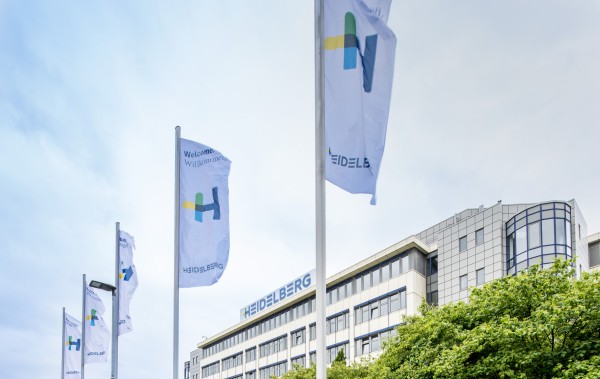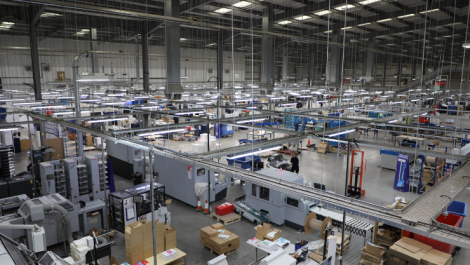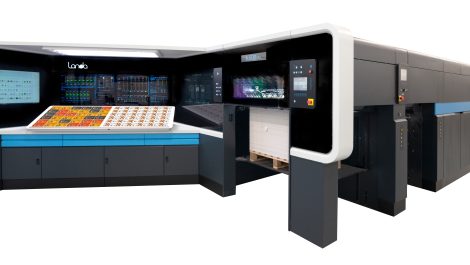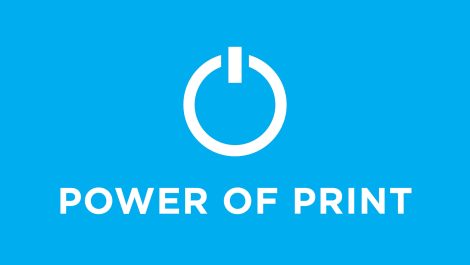Less than a week after a pre-drupa briefing in which it lauded its Primefire 106 as the ‘leading’ B1 digital press, Heidelberg has announced that it is discontinuing the model, along with its very large format offset litho line in order to focus on ‘profitable core business’ as part of an action package that will also see 2000 jobs shed worldwide.
The action plan, which ‘may see plant closures’, calls for the unprofitable lines, which the company says generate an annual net loss of some €50 million, to cease production by the end of 2020 at the latest. It is not clear what ongoing support will be offered to customers with the discontinued models; the Primefire had been sold in ‘every continent except Africa’, according to Montserrat Piedro-Insa, head of the company’s digital print operation, and along with the Landa S10 and Inca Onset M/Fujifilm Acuity B1, was one of very few B1 general-purpose digital presses so far to have active working installations. According to Heidelberg’s statement, ‘the market for the Primefire 106 product has grown much more slowly than anticipated because of the difficult industry and market environment’.
The action plan is expected to generate one-off costs of some €300 million and will affect this year’s figures which are expected to be below last year’s sales of €2.49 billion. Heidelberg has also moved to improve its liquidity by transferring €375 million from its pension trust fund and repurchasing a €150 million high yield bond. These measures will have ‘no negative impact on existing and future pension entitlements’, according to Heidelberg’s statement.
‘This marks a milestone for Heidelberg. At a single stroke, we are freeing ourselves from the severe debt burden and, at the same time, can systematically implement the requisite operational realignment within the next 18 months,’ said Marcus A. Wassenberg, Heidelberg’s chief financial officer. ‘This will make us crisis-proof in the short term and significantly improve profitability so that we can press ahead with our digital realignment.’
The continuing ‘digitalisation’ of its business, in addition to renewed focus on the profitable parts of its offset portfolio will see continuing emphasis on subscription services and software, including the AI-driven technical support capability and user community reported in Digital Printer December 2019/January 2020. This is based on Heidelberg’s years of gathering machine data from 15,000 sites and some 50 million jobs, though this is almost exclusively in offset printing rather than digital. From this the company is developing Performance Advisor Technology, an automated consultant that uses AI techniques to analyse data from some 5000 machines, spot patterns, suggest solutions or improvements and then refine its results according to the feedback generated. According to Tom Oelsner, head of digital innovation, the system, which is in the training/texting phase now is ‘in kindergarten but learning fast’.
The company’s Versafire line of SRA3 sheet-fed toner presses (Ricoh print engines with Heidelberg DFEs and surrounding software) is believed to be secure. New features that were to have been debuted at drupa include the ability to cluster presses for ‘smart and automated’ load balancing and resilience, with a view to achieving ‘industrial digital production’ via multiple toner presses, with the benefits of proven quality and media flexibility, rather than customers moving to high-speed inkjet, a sector in which Heidelberg does not currently have a product, though Ms Piedro-Insa did refer to ‘strengthening’ the relationship with Ricoh, which does. The Versafire range will also gain expanded inline finishing options for creasing, folding and saddle-stitching booklets of up to 120 pages and across a range of weights.





